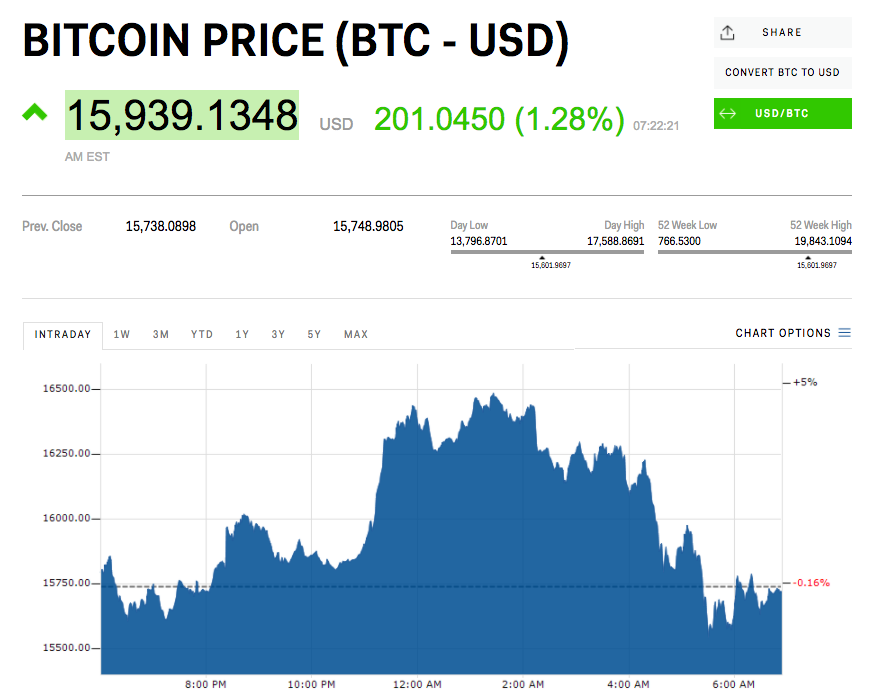- Bitcoin’s price stabilised Wednesday after a roller-coaster period during Christmas trading.
- By lunchtime on Wednesday in the UK, the cryptocurrency was little changed from its opening price.
- Last week it crashed $8,000 in a matter of days.
LONDON – Bitcoin’s price stabilised Wednesday after several days of volatility over the Christmas period, which saw it crash below $12,000 before recovering by more than $4,000 in short order.
On Wednesday afternoon, bitcoin’s price is little changed from its opening quote, trading at about $15,940 a coin, a gain of roughly 1.3%. For normal assets, a 1% move would be considered fairly substantial, but in terms of bitcoin it is a drop in the ocean.
Here’s how the cryptocurrency looks at about 12.20 p.m. GMT, or 7.20 a.m. ET:
“Although the recent plunge frightened many bitcoin fans, when looking at the relatively short history of bitcoin trading, the price action seems just normal. During 2017 the cryptocurrency crashed by 30% or more six times. Every fall was followed by huge price appreciation until it peaked on 17 December,” Hussein Sayed, the chief market strategist at FXTM, said in an email a little earlier.
"Whether the Bitcoin bull market is close to an end or just pausing for a short break, remains to be a wild question for 2018."
One of bitcoin's biggest issues right now is that it is difficult to value with any objective criteria, and traditional investors remain very wary of it.
On Monday, Business Insider's Jim Edwards highlighted a note from investment analysts at Morgan Stanley suggesting that bitcoin may soon have a practical value of nothing.
The analyst James Faucette pointed to the relatively tiny market size and the middling number of retailers prepared to exchange bitcoin for actual goods as reasons for a potentially rocky future. Faucette said bitcoin was not like a currency or like gold and had difficulty scaling.
In the days leading up to Christmas, bitcoin's price fell below $12,000 to a loss of more than 30% at one point on Friday.
Bitcoin's losses were exacerbated by the fact that unlike more traditional markets, it has no mechanism to halt trading when there are large losses in its value. These are known as circuit breakers, and they automatically pause trading when assets fall by a set percentage.

